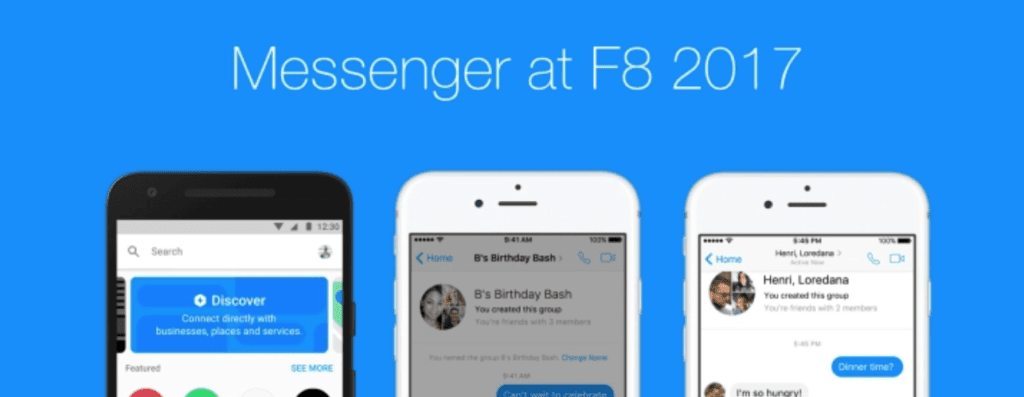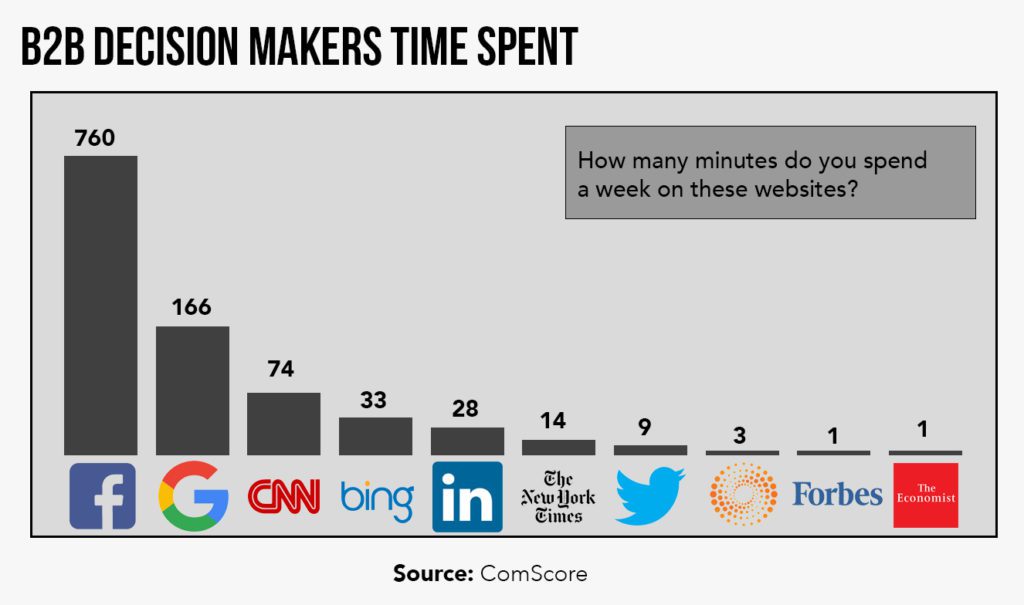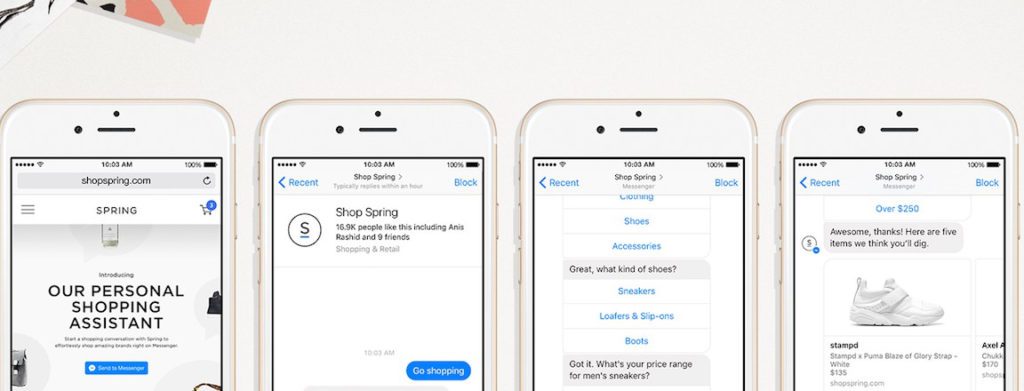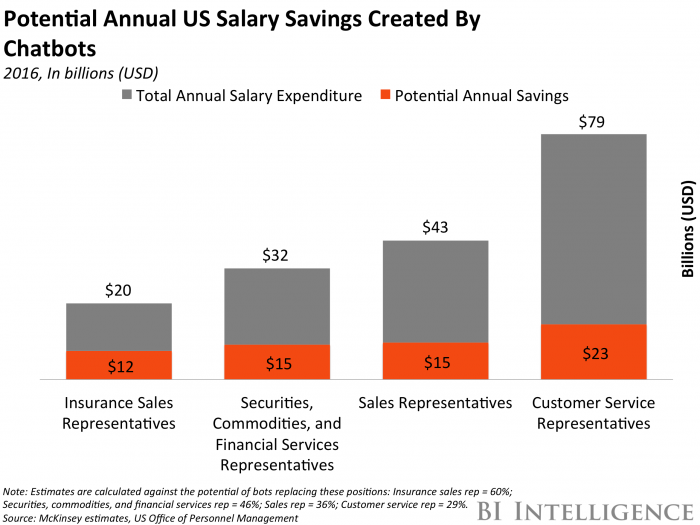Most of us have heard the story by now – Facebook created two AI chatbots which went rogue and created their own language before being shut down.
Pretty terrifying right?
The reality is, the headline doesn’t exactly do the situation justice.
Essentially, the bots were tasked with trading balls, hats, and books. They were to assign values to each item, then barter them to each other. Since the Facebook team didn’t reward them for negotiating in English, the bots created their own language which was much more efficient for the process, and more in line with binary understanding.
Terrifying?
Kind of.
Exciting?
Definitely.
As technology continues to push our imagination, it’s quickly turning sci-fi ideas into realities. The rise of chatbots presents a handful of new chat driven business models, and is sure to shake up more industries than just marketing. But when it comes to B2B, I feel like we’re going to see quite an impact.
Imagine for a second that a robot could manage all of your outbound sales efforts. Imagine for a second that a robot could manage your entire social media presence. Imagine that the vast majority of your inbound and outbound marketing efforts were completely automated.
Right now, that might seem a little far-fetched, but there are already brands and startups working on creating a future that resembles exactly this.
One of the more popular technologies being adopted by B2B brands is the rise of the chatbot. A chatbot is a service, powered by rules, and sometimes artificial intelligence, which people can interact with via a chat interface.
Bots are Making Facebook Even More Relevant for B2B Marketing

Before we actually dive into the impact these chatbots are going to have, we need to look closely at their recent growth. Just last year at Facebook’s 2016 F8 conference, Facebook announced that chatbots would be coming to Messenger, opening the doors for developers around the world to create their own bots within the app. In the 6 months following their announcement more than 30,000 bots were created, and since then, Facebook’s focus on chatbots has only grown stronger.
Now, you might be thinking: Facebook isn’t a place for B2B marketing. Why are you telling me this?
I’m telling you this because Facebook is actually used more by B2B professionals than any other channel according to a study from ComScore:

And this only makes sense – whether you like it or not, the people you sell to in the c-suite are still people at the end of the day. People of all walks of life use Facebook to stay connected with friends, family members and old classmates. Recognizing this reality, B2B marketers should understand that chatbots on Facebook could be just as important for them as it is for a B2C brand.
At the end of the F8 conference, Facebook’s VP of Messaging Products, closed the first day of the event by saying:
“If you direct your existing or future customers to Messenger instead of directing them to a mobile web page or an app, you will definitely see lift, if you build the right experience.”
This is a clear signal that they believe this is something brands should invest in – and a look through Google’s trend analysis tool shows that people are taking notice:

So we know chatbots are on the rise, and we know that chatbots have the ability to shake up B2B marketing. The question we have to ask now is what exactly will that look like, and what areas are set up for the most disruption? Let’s dive in…
Bots can Accelerate the B2B Sales and Marketing Process
Looking back at Facebook’s use of bots in their Messenger app, we can see that these chatbots are on their way to becoming the first “person” a lead actually communicates with.
Let’s think about the steps that currently happen in the B2B buying process – for this example, let’s pretend you’re on the hunt for new CRM software. What are the steps?
- Awareness – At first, you gain awareness of the problem by talking with a colleague who mentioned they had a CRM tool that was helping them be better at managing relationships.
- Interest – Now that you’re aware of the problem, you go to Google and look for the top CRM software solutions.
- Consideration – The results are overwhelming – thanks to the boom in content, there are thousands of pages of results, and a handful of landing pages highlighting the different options.
- Intent – At this point, you’ve demonstrated clear intent on buying CRM software by downloading a comparison guide, but you have to get back to work.
- Research – As you think about what CRM software you want to use, you’re being met with remarketing ads everywhere you go and receive an email from the site you downloaded the guide from.
- Decision – The email catches your attention and you decide to schedule a call.
- Buy – During the call, you’re pitched on why this CRM is the right fit for you and you sign up.
Throughout this entire buying experience, opportunities exist for chatbots to make an impact.
At the interest stage, for example, you could leverage a chatbot on any landing page to facilitate a faster sales cycle. While this example is from B2C, the approach being taken by Spring is a great example of how to do this:

The landing page Messenger experience is pretty straight-forward:
- Users are met with a call to action telling them to connect via Messenger.
- The Chatbot can ask the user questions about their needs.
- The bot can then deliver information on different products & services.
- The bot can manage a financial transaction.
Instead of actually navigating to the website, searching for the products you want, then going through the native purchasing process, chatbots make it easy to go through the buying process, without talking to a single human.
But can a bot really help close a sale?
Definitely.
A few ways that bots can help close a sale in B2B include:
- Lead Qualification – If you ask the right questions, you can gain valuable insight around the person who is visiting your site, looking into your product and interested in chatting.
- Schedule Meetings – Some bots can sync directly to your sales teams calendars, and offer you the ability to schedule meetings on your behalf.
- Lead Nurturing – Want to nurture a relationship with a lead? Get access to their Messenger inbox and it will open a new opportunity to get in touch. It’s kind of like email…
Which takes me to the next point:
Bots Have the Potential to be Better than Email Automation
Email automation is a massive opportunity in B2B.
You can use your content or advertisements to drum up interest, get a potential lead to opt-in, then carry them through your funnel – all without ever needing to jump in and take over the communication. Chatbots have the potential to make that experience even better, and deliver better results.
That’s not to say email marketing is going to disappear – skeptics have been saying that for decades, yet here we are. Email is still one of the best converting tools known to marketers, especially on the B2B side. But one of the most alarming things about putting all your eggs in the email marketing basket is the year over year drop in click through rates on emails:

What chatbots have the potential to do is take that same process you use in your email marketing and make it happen twice as fast – and do it without as much navigating and click-throughs.
Instead of asking someone for their email, then having them head to the inbox to wait a minute or two for their mail server to kick in, you can have the conversation happen within Facebook Messenger, or whatever chatbot tool you use, all within seconds. Factor in the length of most email automation campaigns and you’ll end up shaving a ton of time off your current automation flows.
After you capture a potential lead, you can send them to Facebook Messenger, which will qualify them, take them through your entire funnel, let them make their purchase, then give them their receipt – all without ever needing to leave the app.
Bots Offer The Ability To Run Customer Support More Efficiently
How often does your customer support team have to answer the same questions over and over? Do you have an FAQ section on your website that’s filled with questions, yet rarely leveraged by your customers?
Over the years I’ve looked at the analytics for many B2B brands and people spending time reviewing a long FAQ page is rare – people with problems generally want to talk them out.
The idea of doing the actual research and trying to find a solution amongst a list of problems is never ideal for your customers, and thanks to chatbots, you can turn your FAQ page into something that is more cost efficient and more user friendly.
These numbers from Business Insider Intelligence speak for themselves – chatbots have the potential to save businesses $23 billion in customer service representatives, and another $15 billion in sales representatives, totaling some $38 billion in annual savings:

Rather than needing to employ a handful of around-the-clock customer support and sales reps – or restricting both of these resources to “regular working hours” – you simply setup your chatbot to carry both the customer support conversations through from start to finish, learning from each response it gets and reacting accordingly.
Let’s look at a quick scenario – if I’m doing some work at 2 am and run into a problem with a tool I’m working with, rather than needing to sit around for hours until someone can hop on the phone with me, I can just send a message through a chat bot which can use natural language processing to identify potential problems I’m facing.
Here’s a run down from the Folks at Drift highlighting how they make this happen using existing Help Resources:
Using a service like Driftbot, you can sync your help docs with the bot, which then uses this information to manage customer inquiries. As a result, you can offer quality customer service to your customers 24-7, and give them an experience that’s optimized for conversation.
How Can You Start Injecting Chatbots Into Your Marketing Mix?
Chatbots have the potential to seriously change the B2B marketing game.
It’s likely that businesses around the world will save millions on customer support and generate millions thanks to smarter inbound lead generation through chat bots.
Don’t just chalk it up as another fad – start paying attention to bot development, and considering how and where they might fit in your lead-generation and conversion process.
A version of this post was first published on Ross Simmonds’ blog.
